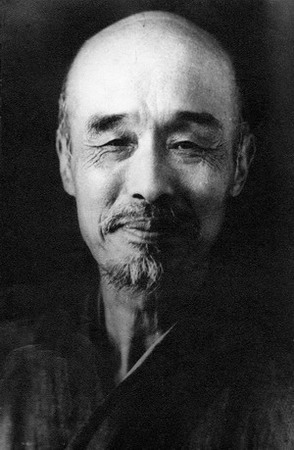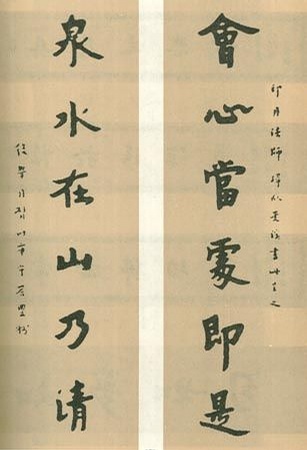Master Hong Yi
Hong Yi (1880-1942), born Li Shutong, was a Chinese Buddhist monk, a calligrapher, master painter, musician, dramatist, seal cutter and poet. He also went by Wen Tao, Guang Hou, and Shu Tong, but was most commonly known by his Buddhist name, Hong Yi. He was born in Tianjin to a banking family originated in Hongdong County, Shanxi, that immigrated to Tianjin in Ming Dynasty (1368-1644).
In 1898 Li moved to Shanghai and joined the "Shanghai Painting and Calligraphy Association", and the "Shanghai Scholarly Society" while he was attending the Nanyang public school.

In 1905 Li went to Japan to study at Tokyo School of Fine Art in Ueno Park where it specialized in Western painting and music.
In 1910 Li returned to China,and was appointed to Tianjin's Beiyang Advanced Industry School. The next year he was appointed as a music teacher in a girl's school in Shanghai.

In 1912, he went to Hangzhou and became a lecturer in the Zhejiang Secondary Normal College where he taught not only Western painting and music but also art history.
Li was hired by Jiang Qian in 1915 to teach at Nanjing Normal College (renamed in 1949 to Nanjing University), and taught painting and music. He also taught at Zhejiang Secondary Normal School and the predecessor of famous Hangzhou High School.
During these later years, Li's reputation grew, as he became the first Chinese educator to use nude models in his painting classes, not to mention as the first teacher of Western music in China.
Li Shutong himself was also an accomplished composer and lyricist. Many of his compositions are still remembered and performed today.
In 1916, Li underwent a 21-day fast at a temple in Hangzhou, and experienced the benefit of a spiritual life. The following year, he took refuge in the Three Jewels of Buddhism. After spending another year there, Li began a new chapter in his life by choosing to be ordained as a monk, and thus began a holistic life dedicated to propagating Buddhism and its code of conduct.
After becoming a monk he only practiced calligraphy, developing a simple and unadorned, yet unique style, which everyone who received a sample of treasured. He became known to all as Master Hong Yi.
In 1942, Master Hong Yi died peacefully at the age of 63 in Quanzhou, Fujian Province. It was the calligraphy that Hong Yi kept practicing as a monk until he passed away. All through his 62 years in life, the calligraphy kept him company for at least 50 years.
Hong Yi began learning how to write seal characters as a teenager. Back then, he would practice official script, regular script, running style and cursive writing. In a broad sense, Hong Yi's calligraphy style could be categorized into two types: the pre-conversion style, which is flowery and muscular, and the post-conversion style, which is simple and unadorned.
The practice of calligraphy eventually changed from producing artistic work to spreading religious notions. As a monk, Hong Yi does not regard himself as an artist but as a person who writes from his heart with a brush.
Prominent author, educator and publisher in China, Ye Shengtao, once commented on Hong Yi's calligraphy: "I cannot tell which group's calligraphy Hong Yi has been imitating in recent years. And I don't know too much about calligraphy. But I like his scripts very much. As to the reason, I could only tell based on my intuition, because his writings are full of charm. The whole piece of calligraphy is like a peaceful gentleman discussing scriptures with a smile, who is neither humble nor pushy…He gained his skills out of the writings. That's why the more I look at his work, the more charming I feel they are."
-
Visionary Pathway - Hangzhou Playbook
July 15, 2025



